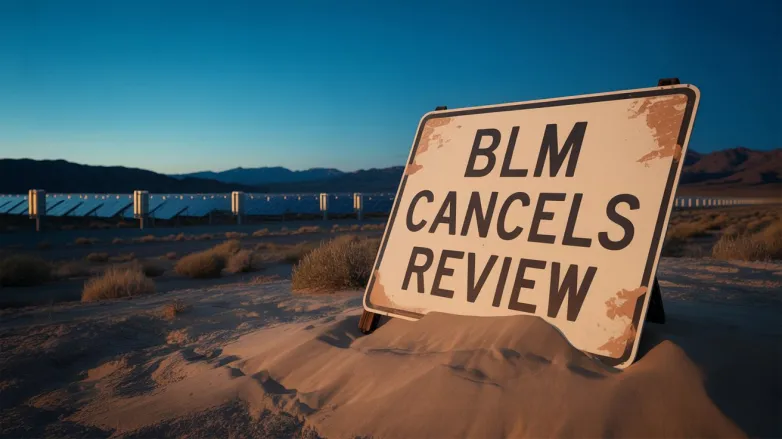BLM cancels review for Nevada Esmeralda 7 solar-storage project proposal
- The U.S. Bureau of Land Management halted the environmental review of the Esmeralda 7 solar-plus-storage proposal in Nevada, sending the mega-project back to square one.

The U.S. Bureau of Land Management (BLM) has formally canceled the environmental review for Esmeralda 7, a massive solar-plus-storage cluster proposed on public lands in Nevada. The move effectively freezes the project’s federal permitting, forcing the developer to reassess site strategy, interconnection timelines, and stakeholder engagement if it hopes to refile.
Why it matters: in the U.S. West, large-scale clean power increasingly depends on access to federal land and transmission. A pulled review doesn’t end a project outright, but it does signal that the application—as scoped—could not meet thresholds around environmental impacts, cultural resources, wildlife corridors, or cumulative effects alongside nearby developments. It also reflects the growing sophistication of BLM reviews in regions where utility-scale solar has proliferated quickly.
For developers eyeing similar footprints, the message is practical. Early, substantive engagement with tribal governments and local communities is now table stakes, as is rigorous siting to avoid sensitive habitats and to minimize visual and recreational conflicts. Mitigation banking, wildlife crossings for access roads, and alternative layouts that shrink or shift arrays can turn “no” into “revise and resubmit.” Meanwhile, interconnection strategy must keep pace; a change in siting can reshuffle queue position or trigger new network upgrades, stretching schedules and budgets.
Grid reality looms large. Nevada’s daytime solar is abundant, but evening peaks remain tight. Co-located batteries—often two to four hours—are essential to shift output and provide fast frequency response, yet battery yards also introduce fire-safety and land-use considerations that planners scrutinize closely. Designs that preserve buffer zones, compartmentalize BESS containers, and harden controls against extreme weather fare better in today’s reviews.
For the broader market, a canceled review is not a setback for clean energy so much as a sign of maturation in land stewardship and grid planning. Projects that succeed on public lands typically arrive with strong baseline studies, credible alternatives analyses, and tangible community benefits—local jobs, road improvements, and decommissioning bonds that guarantee restoration.
Esmeralda 7 can return in revised form, potentially on a smaller footprint, a different configuration, or a new site. If it does, the next filing will need to show that lessons have been internalized—balancing gigawatt-scale ambition with the landscape-scale care that twenty-first-century projects demand.
Also read

